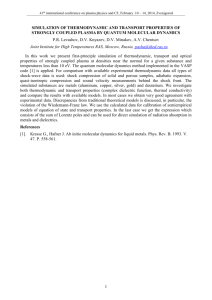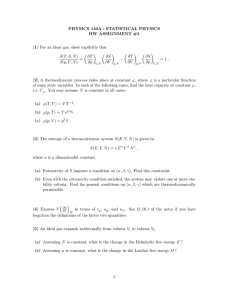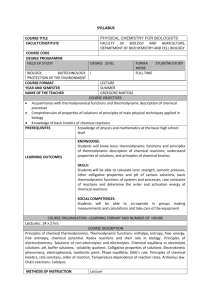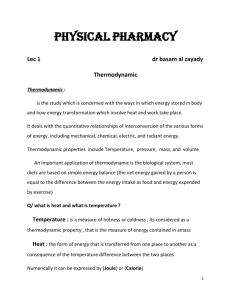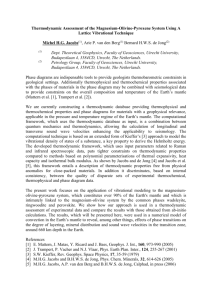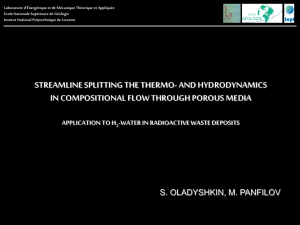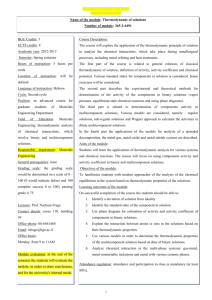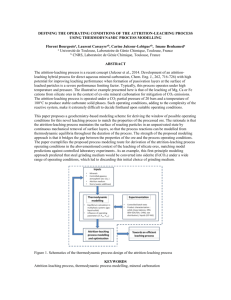General abstract - The Graduate School
advertisement
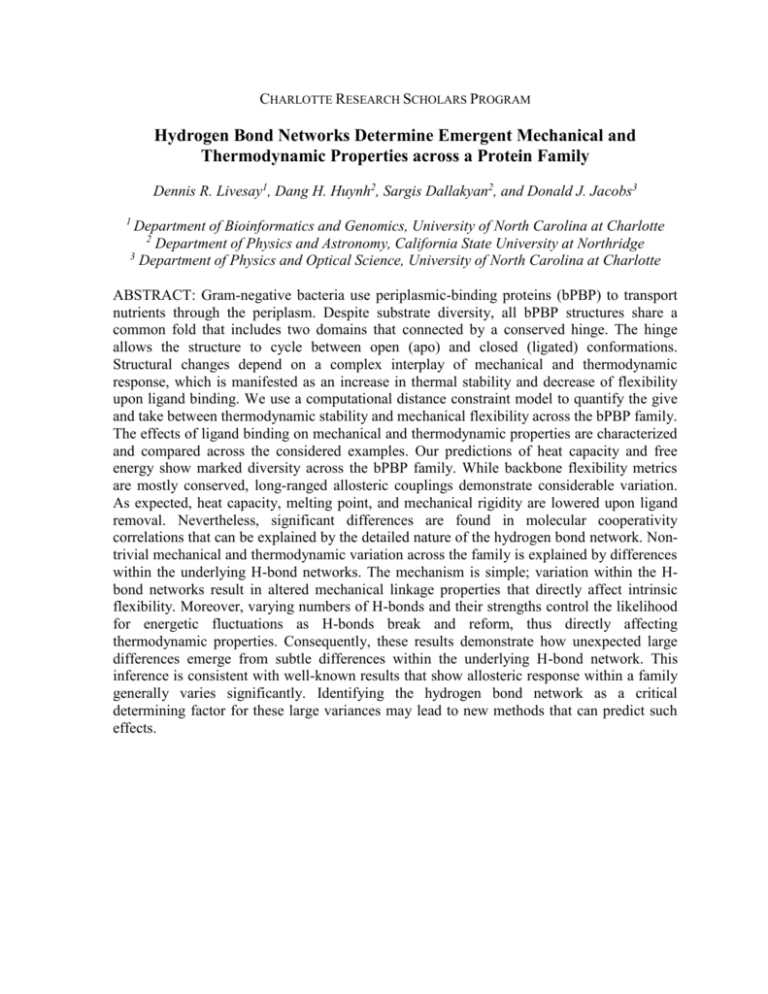
CHARLOTTE RESEARCH SCHOLARS PROGRAM Hydrogen Bond Networks Determine Emergent Mechanical and Thermodynamic Properties across a Protein Family Dennis R. Livesay1, Dang H. Huynh2, Sargis Dallakyan2, and Donald J. Jacobs3 1 Department of Bioinformatics and Genomics, University of North Carolina at Charlotte 2 Department of Physics and Astronomy, California State University at Northridge 3 Department of Physics and Optical Science, University of North Carolina at Charlotte ABSTRACT: Gram-negative bacteria use periplasmic-binding proteins (bPBP) to transport nutrients through the periplasm. Despite substrate diversity, all bPBP structures share a common fold that includes two domains that connected by a conserved hinge. The hinge allows the structure to cycle between open (apo) and closed (ligated) conformations. Structural changes depend on a complex interplay of mechanical and thermodynamic response, which is manifested as an increase in thermal stability and decrease of flexibility upon ligand binding. We use a computational distance constraint model to quantify the give and take between thermodynamic stability and mechanical flexibility across the bPBP family. The effects of ligand binding on mechanical and thermodynamic properties are characterized and compared across the considered examples. Our predictions of heat capacity and free energy show marked diversity across the bPBP family. While backbone flexibility metrics are mostly conserved, long-ranged allosteric couplings demonstrate considerable variation. As expected, heat capacity, melting point, and mechanical rigidity are lowered upon ligand removal. Nevertheless, significant differences are found in molecular cooperativity correlations that can be explained by the detailed nature of the hydrogen bond network. Nontrivial mechanical and thermodynamic variation across the family is explained by differences within the underlying H-bond networks. The mechanism is simple; variation within the Hbond networks result in altered mechanical linkage properties that directly affect intrinsic flexibility. Moreover, varying numbers of H-bonds and their strengths control the likelihood for energetic fluctuations as H-bonds break and reform, thus directly affecting thermodynamic properties. Consequently, these results demonstrate how unexpected large differences emerge from subtle differences within the underlying H-bond network. This inference is consistent with well-known results that show allosteric response within a family generally varies significantly. Identifying the hydrogen bond network as a critical determining factor for these large variances may lead to new methods that can predict such effects.

